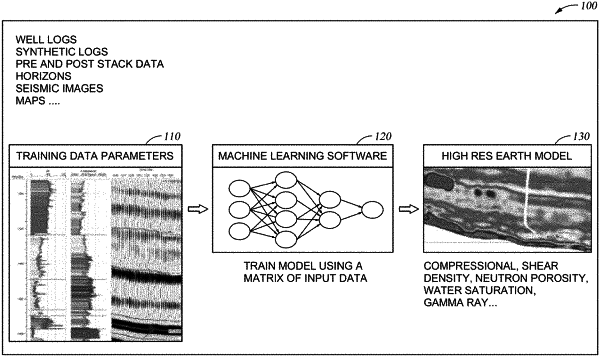| CPC G06N 5/04 (2013.01) [E21B 49/00 (2013.01); G01V 1/282 (2013.01); G01V 99/005 (2013.01); G06N 20/20 (2019.01); E21B 2200/20 (2020.05)] | 17 Claims |

|
1. A method, comprising:
receiving detected data, wherein the detected data includes formation attributes relating to a first depth point along a wellbore;
training a first instance of a machine learning model based on the detected data, wherein the training of the first instance of the machine learning model comprises:
initializing weighting values of the first instance of the machine learning model with random values;
iteratively adjusting the weighting values of the first instance of the machine learning model based on an objective function and the detected data in order to determine final weighting values of the first instance of the machine learning model;
receiving additional detected data, wherein the additional detected data includes formation attributes relating to a second depth point along the wellbore;
training a second instance of the machine learning model based on the additional detected data, wherein the training of the second instance of the machine learning model comprises:
initializing weighting values of the second instance of the machine learning model with the final weighting values of the first instance of the machine learning model;
iteratively adjusting the weighting values of the second instance of the machine learning model based on the objective function and the additional detected data in order to determine final weighting values of the second instance of the machine learning model;
generating an earth model based on:
a first predicted parameter related to the first depth point that is determined using the first instance of the machine learning model; and
a second predicted parameter related to the second depth point that is determined using the second instance of the machine learning model.
|